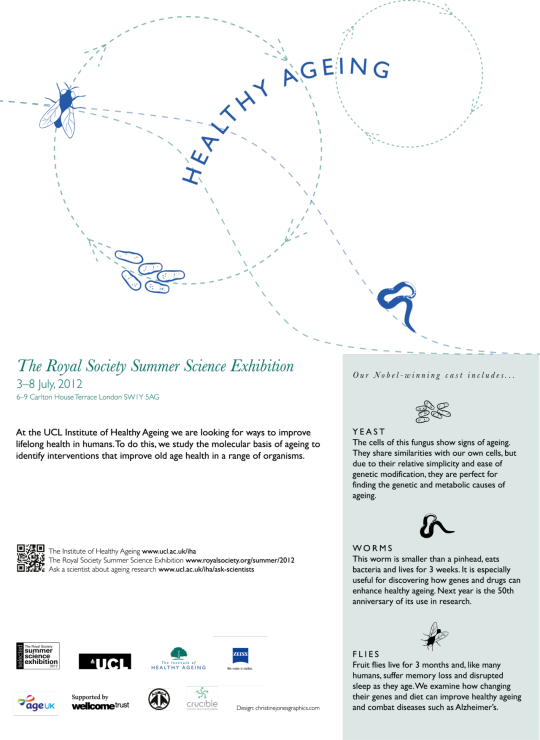Photo

The full ageing suit gets a workout (& the apples are going fast!)… #sse2012
0 notes
Video
youtube
Crazy tremor glove action from Matt...
0 notes
Video
youtube
why on earth would you do research using flies?!
0 notes
Photo

it's all coming together! big day tomorrow: school visit test run....
0 notes
Photo
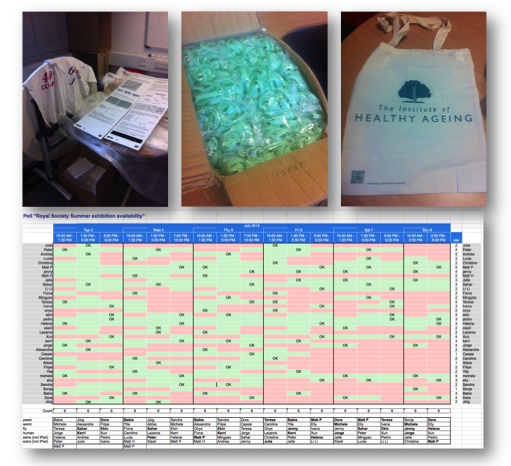
The Royal Society Summer Science Exhibition is taking over my office...
we also finally have a schedule for helpers on the exhibit. Loads of volunteers - thank you!
1 note
·
View note
Text
I was presenting some of my work at a group meeting recently- a valuable exercise, as presenting scientific work is a skill that needs to be developed because presenting at conferences is one way of disseminating new and exciting data. You want your audience to understand what you’re doing. Also, it’s a way of getting feedback and things you didn’t think about when working along: it’s a good idea to run stuff past a room filled with raw brainpower, you can be sure they find something that escaped your attention.
Anyways, I thought I’d share some of the stuff with you, the prospective visitor.
So, worms, they are microscopic. That means you can only see them well with a microscope that magnifies things 6 to 10 times. Worms lay eggs, and the moment an egg hatches, the emerging worm is called a larva and is about 200 micrometers long (a micrometre is one thousand times smaller than a millimetre!). This larva grows up within 5-6 days to a fully grown adult of a length of about 1.2 millimetres. During the first few days as adult it will lay about 300 eggs and then spend the rest of its life eating bacteria until the moment it dies, which is after about 23 days.
This development from larva to adult worm is shown below in the graph. These two curves represent the numbers I got when I measured the sizes of about one thousand worms over six days from when they hatched as larvae to adults and laid eggs themselves (yeah, science is not always about exciting experiments...). The blue curve shows measurements I took from our normal worms, and the purple curve depicts the growth rate of a different type of worms that are smaller.
How can I get useful information about what happens in real life from a few lines like these? Or in other words, how can I tell the purple ones are smaller than the blue ones as adults? First I look at the horizontal axis labelled days. These are the days I took the measurements. Let’s look at day 4 D4, e.g. From the middle between the two ticks surrounding D4, I draw an imaginary straight line up until my imaginary line crosses the purple curve. From this point, I carefully trace another line across to the left where it cuts the vertical axes and so connects the point on the purple curve on day 4 with the length and I take a note of this number. Then I repeat the same process for the blue curve. I go to D4, then draw another imaginary straight line up to where my line meets the blue curve. Again, I imagine another straight line across to the left where it meets the vertical axis and record the length. Now, I compare the two numbers, and the number I get from the purple curve should be smaller than the number from the blue curve.
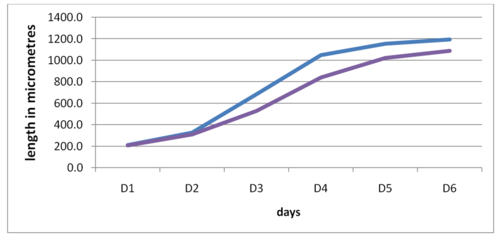
(The number for the blue curve on day 4 is 1047 micrometres and the purple curve is 840 micrometres).
0 notes
Text
Do fruit flies get Alzheimer’s disease?
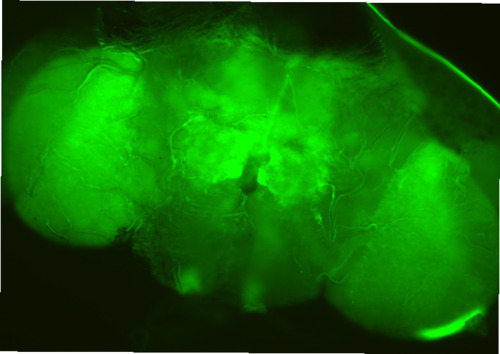
A fluorescent fly brain
Can you believe that those tiny little fruit flies (the ones that hover round your fruit bowl in summer) actually have a brain? And, like us, it controls many of the body’s functions from memory to movement. This makes flies very useful for scientists studying all sorts of diseases that affect how the brain works. What’s more, flies have a very short lifespan and are easy to manipulate genetically, both great advantages in our own work on Alzheimer’s disease, for which ageing and genetics are major risk factors.
Alzheimer’s disease is the leading cause of dementia. As one gets older it is common to lose your memory, but in the case of Alzheimer’s it’s more than just forgetting where you left your keys. Patients often forget their names and, sadly, do not remember some of their loved ones. It’s one of the few diseases where the carers and families suffer perhaps as much as the patients; a daughter longing for her dad to remember her name, or a partner hoping for their mate to remember “their song”.
Scientists can mimic Alzheimer’s in the fly by introducing human genes, which are involved in the disease, into its’ nerve cells. In patients these genes produce proteins that stick together to form structures known as plaques and tangles in areas of the brain that control memory. Of course we wouldn’t go so far as to say that flies develop Alzheimer’s, but the build-up of these disease-related proteins in nerves throughout the fly brain can affect several of their functions, some of which we can easily measure. For example, the Alzheimer’s flies that we use in our lab are a bit shaky and don’t climb well and you can watch this in the video-clip below. Our aim is then to find genes and, more importantly, drugs that can improve these functions, with the hope that we can eventually find a cure to help Alzheimer’s patients and their carers.
We explain more about how the fruit fly can be used to study Alzheimer’s in the following film ‘Learning to fly’:
http://www.wellcome.ac.uk/News/2010/Features/WTX062515.htm
Oyinkan Adesakin and Fiona Kerr
1 note
·
View note
Text
The Fountain of Youth – A Worm’s Tale
post by Filipe Cabreiro
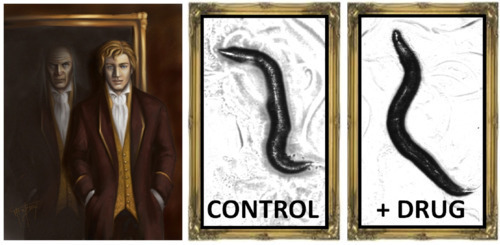
http://salmanlatif.wordpress.com/2011/08/04/the-picture-of-dorian-gray/
In “The Fountain” by Darren Aronofsky, the fear of death and fragility of human life are a common denominator throughout the whole movie. Such innate fear has been driving the human race to find a solution to alter the course of normal ageing. Until recently, the possibility of reaching a non-ageing state like Dorian Gray’s character or finding “the fountain of youth” was remote (unless you are Jack Sparrow or Indiana Jones).
We scientists decided to have a different approach to this task. We gave up on finding the fountain’s “geographic location” and instead wanted to create one, but with one important difference. Our aim is not to create a fountain to increase lifespan to infinity but instead to reduce a sizeable proportion of human suffering derived from the effects of growing old. Ageing is the predominant risk factor for the many horrible illnesses of later life, including heart problems, cancer, and dementia such as Alzheimer’s disease. If we can develop a drug or “poly-pill” containing a combination of drugs that can target and “cure” ageing, we might then help treat many of the ailments occurring later in life.
Excellent progress has already been achieved worldwide, with some drugs robustly extending “healthspan” and lifespan in several model organisms, such as worms. At the Institute of Healthy Ageing, we are also pursuing this goal and our results are promising. As Jack Sparrow would say: “Death lies before us, as we sail to the Fountain of Youth”.
If you want to find out more, read: Cabreiro, F. & Gems, D. Treating aging: progress toward dietary restriction mimetics. F1000 biology reports 2, 76, doi:10.3410/B2-76 (2010). http://www.ncbi.nlm.nih.gov/pubmed/21173839
3 notes
·
View notes
Link
the royal society website with all exhibitors has gone online today: click and marvel at amazing, curious and fascinating science! anything goes.
0 notes
Text
walk on the wild side

Who has the best model organism? I'll see your sniffing worm and raise you a gender-bending fly...
Flies are amazing because of the genetic experiments we can do with them. The fly on the far right is a male, which is almost transformed into a female (compare the stripes on the body and the close-up of the genitals), using a genetic trick that caused it to express a female-specific gene while it developed.
(For music geeks, this post is named after Lou Reed's homage to New York City transvestites, from his 1972 album Transformer. As it happens, transformer is the name of the gene we used to make this transsexual fly...)
0 notes
Text
thoughts on immortality.
every now and then you end up doing an experiment which takes up all of your time and there's no time left for socialising, eating, cleaning or blogging! the last two weeks were such a time- but we're back with a vengeance. so, question. lots of questions in fact: imagine humanity were immortal because of the efforts of science, if we just for this post assume that this is what ageing research is all about and to discover the fountain of youth and immortality is to succeed.
what do you think life as an immortal would be like? does an immortal organism need food? what about disease, injuries, reproduction? could the human mind cope with immortality? would the organism be in an immaculate state at all times or would we deteriorate over time?
would there be something like an annual MOT and service, like with a car? shops with spares limbs, internal organs, brains much like a pick-a-mix? or would there be clinics that grow spare clones from your DNA that are then used as supplies for personalised grafts, replacing faulty organs, broken limbs?
post your thoughts by hitting the submit button above!
of course i am not the first person to think about that- the subject is as old as humanity itself, and all along there have been reports of resurrected members of our species. in 1992, the authority on all things beautiful published a very interesting opus on the subject, which in my opinion successfully, and radically, addressed one possible outcome of immortality. It's of course Hollywood I am talking about and the movie is "Death Becomes Her" with Meryl Streep, Goldie Hawn and Bruce Willis. Below is a link to a five minute summary of the movie- beware! there are loads of spoilers in the clip if you haven't seen the whole piece.
http://www.youtube.com/watch?v=jXsnlzhsoS4
3 notes
·
View notes
Photo
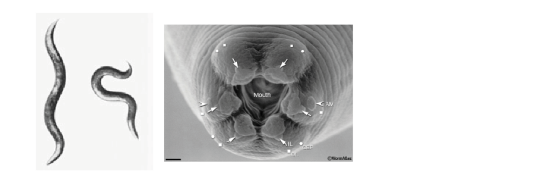
worms... smelling food can shorten your lifespan!
This is our worm of choice: the nematode worm Caenorhabditis elegans. If you make one that can't smell, it lives longer!
Our worms are about 1mm long, they live on a 'lawn' of bacteria and have a lifespan of about 2-3 weeks. This makes them extremely easy to maintain and perfect for testing numerous ways to extend healthy life.
The enlargement is the worm mouth and around it (see arrows) are sensory organs. If you knock out some of these, the worm is longer lived... that's right, just smelling your food shortens your lifespan. And just in case you thought this was peculiar for worms, it is true for flies also. No-one yet knows if this also applies to more complex organisms.
5 notes
·
View notes
Photo
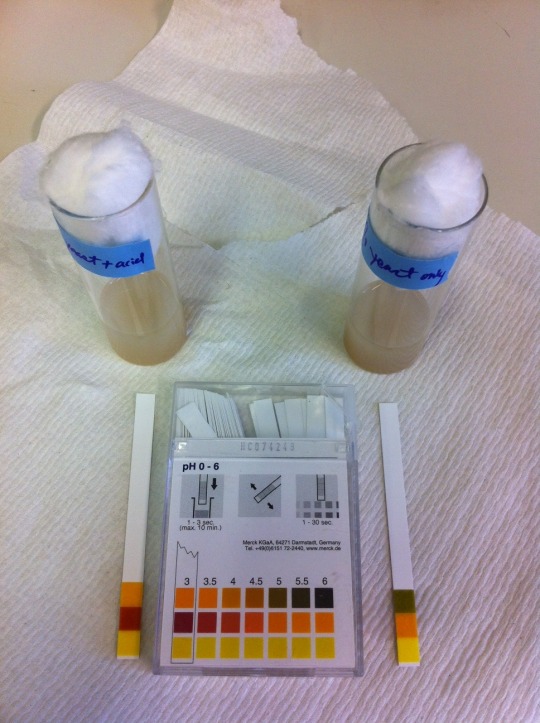
This is more to settle a bet publicly between me and my technician...
I was right! the pH in the fly food (right) is between 4.5-5!
(and, I suppose I was wrong that acid addition doesn't brings down the pH even lower)
0 notes
Photo
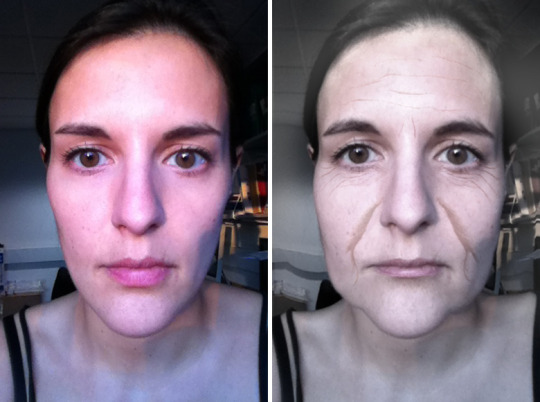
Only a few decades to wait to see how accurate it is!
3 notes
·
View notes
Link
Check out this app, take a picture of yourself before and after and submit it to our blog (-:
Thank you!
0 notes
